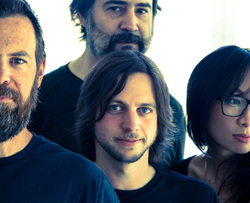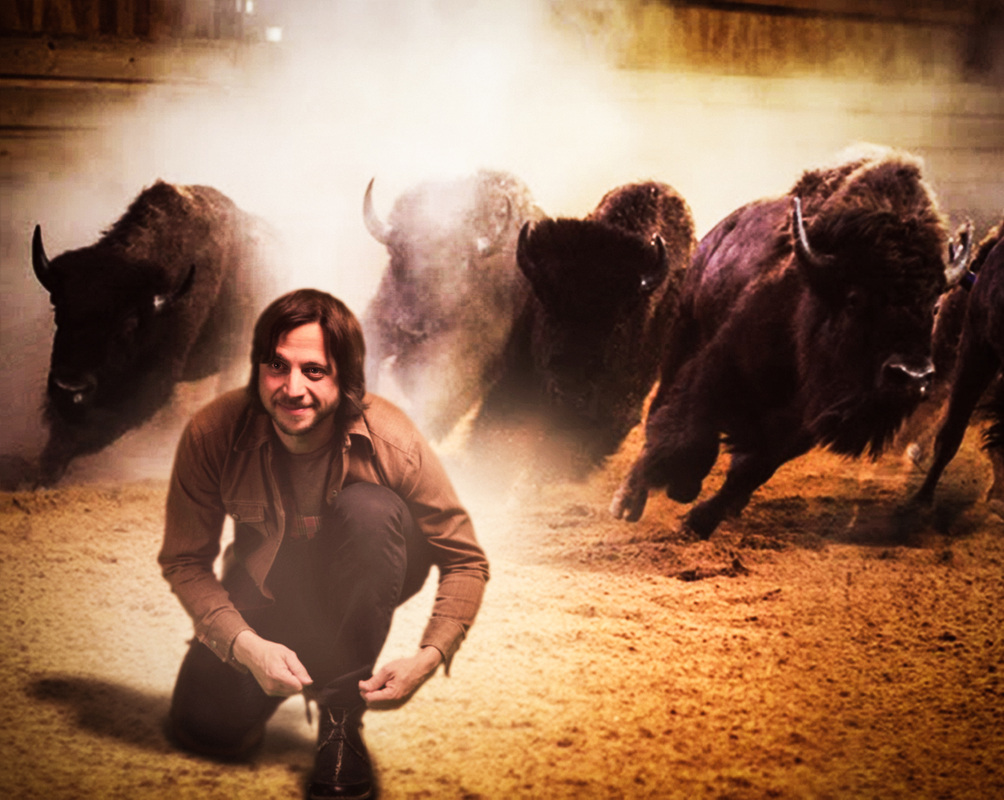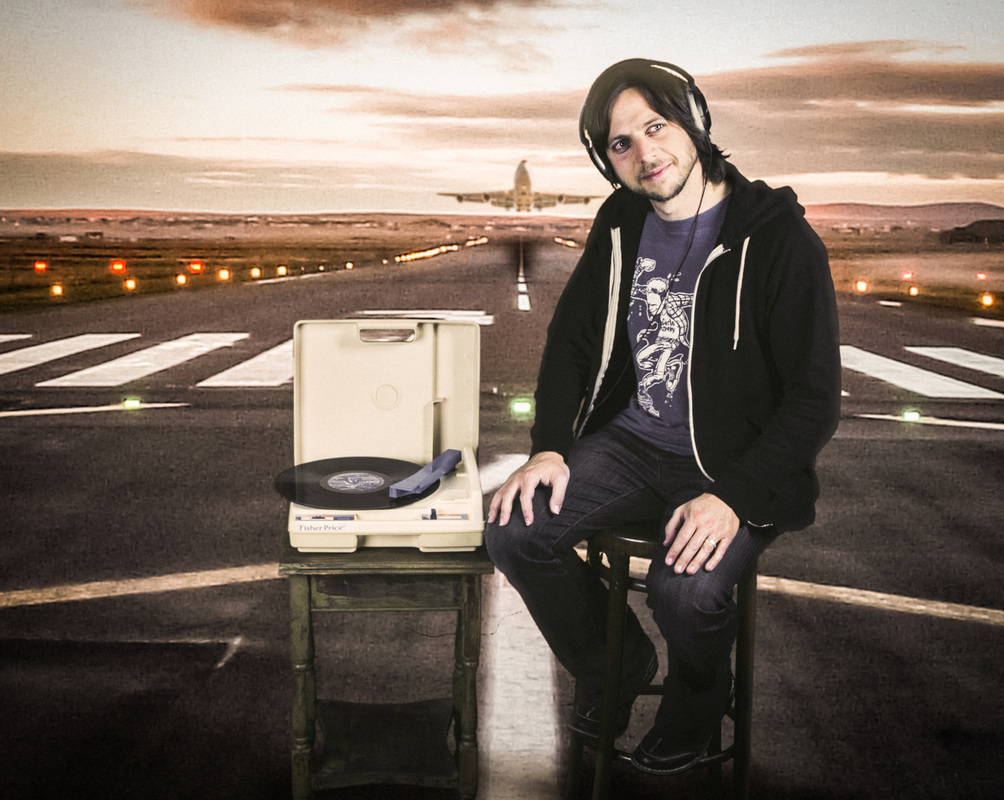
Friedman’s record is also one of the last covers done by the legendary Storm Thorgerson. Thorgerson designed iconic rock album covers for Pink Floyd, Led Zeppelin, Peter Gabriel and many others. Friedman approached Thorgerson after realizing he was the man who produced many of his favorite record covers. In addition to being a musician, Friedman is a multimedia artist. He values the artwork--and the connection to the past Thorgerson brought. Thorgerson's covers crossed styles and genres.
Can't Talk Now has a multi-genre sound. It has hints of folk rock, power pop and even So-Cal Punk rock. Hell, there are even hints of bands like Dinosaur Jr. and Meapuppets. Yet, it all fits together but how?
“It's the same question I've always asked of The Beatle's White Album; I mean, Helter Skelter followed by Long, Long, Long?! How could that possibly work? But it does. I've been influenced by so many different musical styles and I just let them come out in whatever way they want in my song. But then I do sometimes worry that they won't work together.” he says. “I write my songs not around a particular sound or vibe but around a melody. I love a vocal melody that stretches over many measures before it repeats. Before I record any song, I sit down with my co-producer Christopher Hoffee and play the song with just the vocal melody over chords. If the song doesn't work in its barest form then I know it's not ready to be a song yet. Then the instrumentation gets added to support the emotion of the song. And I have a lot of emotions. So I guess I need a lot of different sounds. Hopefully, all these sounds work together because the making of every song ultimately shares the same approach and emphasis on the melody. “
When he chose the songs he imagined them as a movie soundtrack. He moved the songs around to find an order that had an emotional arc similar to a movie. There is more than just a musical theme, there is a lyrical one.
“When I wrote the music for my prior album, I was struggling with depression and I wrote my songs as a form of therapy. As I reflect on those older songs, I see how I used to consider myself the victim of my troubles. But then I had an epiphany,” he says. “I realized that the negative thoughts I was having were not thoughts that I was choosing to have. Some other part of my brain was thinking without my permission. I began to see this part of my mind as an uninvited house guest and rather than frustrate me, his antics started to amuse me. “
The songs still dealt with life’s problems but these new tracks had more humor and optimism. Friedman says there was a sense of joy in this new work.
“While stylistically varied, the songs are rooted from a common theme: we can find joy more easily if we stop our minds from ceaselessly grumbling and begin to live fully in the present moment.” says Friedman.
You can see some of Friedman's video shorts
for the album HERE.
“The equipment is mostly vintage preamps and compressors and microphones. Even though we are recording to digital, Christopher, likes to record as if we're using tape. That means we've got to be able to play the song all the way through until we get the right take. If we can't, then we've got to keep practicing,” he says. “That may seem obvious, but a lot of songs these days are recorded in pieces and then copied and pasted together in the computer. Pretending we're using tape forces us to improve as musicians, and I personally feel like this process allows the human-ness and emotion of the performance to come through stronger. I'd rather hear a track with good emotion and some mistakes then a perfect track with no feeling.”
The aim is for the musicians to push themselves to play rather than process. On the track, Melancholy Melody, Friedman doesn’t use a delay pedal but works painstakingly at re-playing the guitar part slightly later.
“It was torture. And fun! “he says. “I'm addressing real issues on the record and so we made it a priority to be real in how we recorded it.”
When it comes to the “gear” that was most important in creating Can’t Talk Now’s palette Friedman has an interesting thought. It wasn’t actually gear.
“I discovered that our secret weapon was background vocals. They were one of the last things added to each song, and the anticipation of waiting for those tracks to be laid down made me giddy. There’s a joy and a sense of community that a group of voices brings to a song, and I couldn't wait to hear them.” says Friedman.
Friedman says he has played music for as long as he can remember. It is the focus of his life.
When I'm not making music, I'm miserable. It's not really a choice. I pretty much have to keep making music. When I was 13, I started making music with friends. When I was 14, people paid us to do it. But the money was never why I did it,” says Friedman. “In fact, the stress of feeling like I have to make money from music is one of the worst things for my creativity. My solution is to make money by other means, which allows me to focus on the things I like most: writing songs, recording them, and sharing them with people who might enjoy them. And I don’t have to compromise my art to make it commercially viable.”
“The concept is that every month I come up with some new musical challenge for myself (whether it's writing a song with a melody that never repeats or re-writing a classic rap as a song) then I have a month to write the song, go into the studio and record an album-quality track which I then have to release on the first day of the following month. And I'm having so much fun! The challenges take me out of my comfort zone and make me grow as an artist.” he says.
The promise to do at least one song a month doesn’t let the “practical necessities of daily life” get in the way of doing music.
“We're in a really exciting time in music history because the old models just don't seem to be working anymore. We've got an opportunity right now to come up with new ways of delivering and consuming content,” says Friedman. “And so I'm trying something new; instead of the traditional spend-a-year-recording-twelve-songs model, I'm going to just keep writing and recording and releasing a new song every month.”
The-A-Song-A-Month Club started on January 1, 2013 and you can check it out HERE.
At one point Friedman made music but didn’t share it with anyone. But he had something of an epiphany.
“For so many experiences in my life, the memories are inseparable from the music I was listening to when they happened. And now when I re-listen to any of those songs, I'm transported back to that moment, to the feelings and the sensations.” says Friedman.
He remembered how all those songs enriched his life and felt he needed to put his songs out there to be part of other people’s memories.
“As far as what I'm trying to say, well, I believe that we humans were given great power but also a great burden with this brain of ours. We're like a baby with a chainsaw. We don't know how to turn it off, so it runs and runs, spitting out fumes and making so much noise we have trouble taking in anything around us,” he says. “If there's a fundamental message on this record, it's to recognize that the mind has a mind of its own, and that its thoughts don't define who we are. Once we can start to recognize these thoughts for what they are, we can quiet the mental noise and begin to truly experience life.”


 RSS Feed
RSS Feed